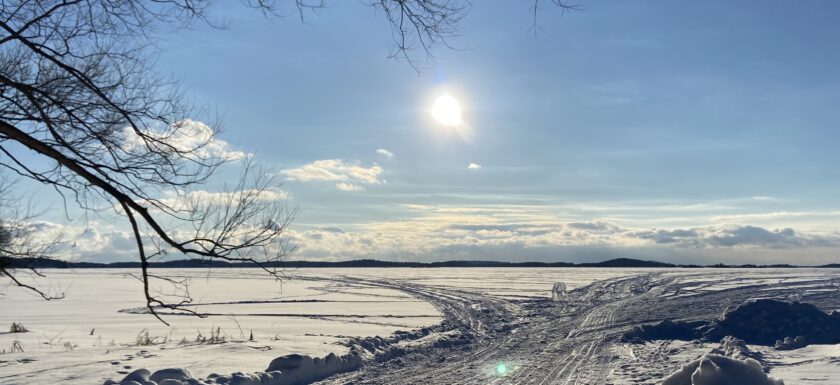
One of my earliest memories of ice fishing is traveling down the middle of Oneida Lake in a late 70’s four door Ford sedan doing about 30 miles per hour.
The driver was a guy named Sam Pirano. The front passenger — with a bottle of red wine squeezed between his legs — was a fellow named Walter Lorezel. His glasses were thicker than the bottom of a coke bottle and hung precarious on the bridge of his big red nose like scaffolding falling off a building. My Dad’s ice fishing buddies.
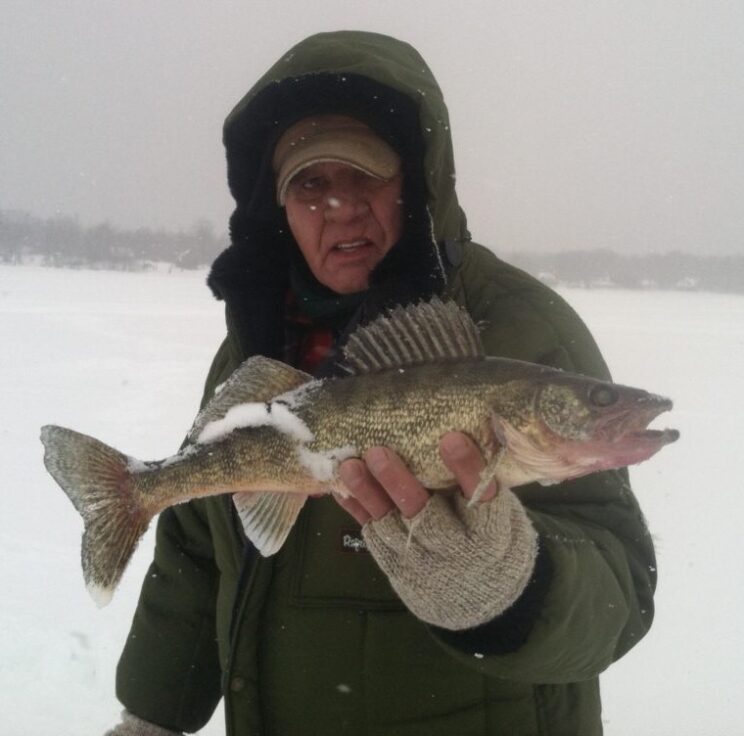
I was about 12 years old and sat in the middle of the back seat. To my right sat my Dad, a packbasket full of ice rods on his lap and a can of beer in his hand.
On my left sat a guy named Joe. He had a lazy eye and stuttered.
The big car bounced over pressure cracks and plowed through low snow drifts as we sped along towards the channel of Oneida Lake…My Dad and his fishing buddies drinking and laughing the whole time.
We came across other ice anglers on our way. Sam would pull the car alongside them and ask about the fishing. Word was the fish were biting under the ice near buoy 121.
The ice sheet we drove upon was at least two foot thick. And besides exiting hard out of a couple high-speed donuts Sam performed en route…We arrived around lunchtime in fine shape.
And the fish were biting.
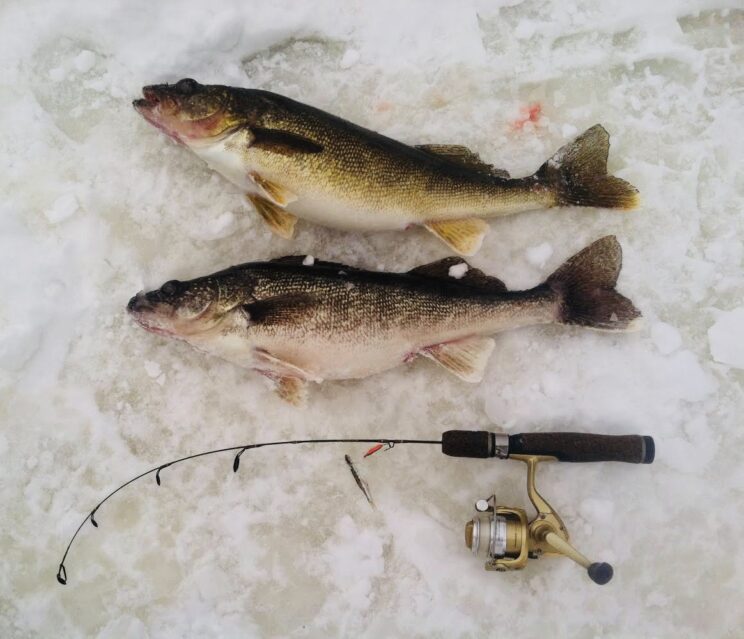
We sat on overturned five gallon buckets and jigged big swedish pimple spoons tipped with perch eyes. My Dad kept an ‘”eye gouger” in his pocket. The eye gouger was a short piece of wooden dowl with a loop of copper wire sticking out of one end.
When fresh bait was needed the “eye gouger” was used to extract an eyeball from the eye socket of a half-frozen jumbo perch in seconds.
Perch eyes made great bait. They still do.
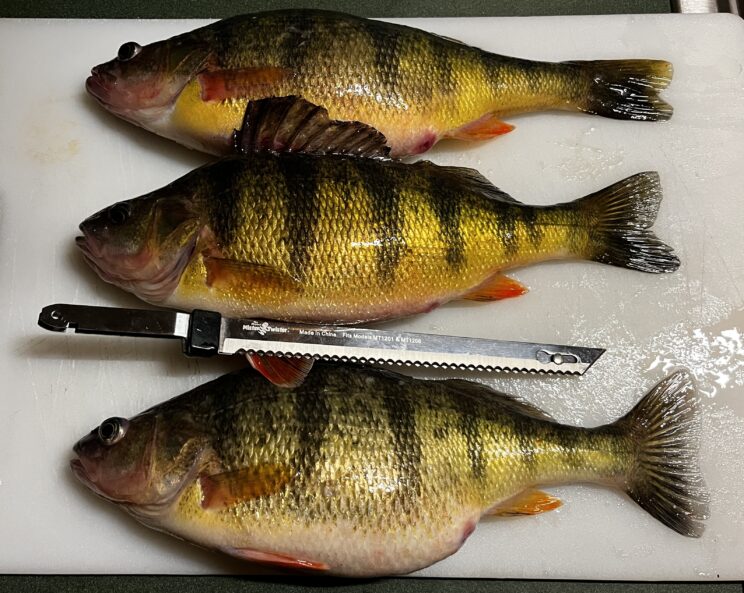
We had no shelters. No sonars. No portable heaters. We dragged our gear on homemade sleds and filled buckets with big walleye and perch.
No Navionics or cell phones. Fish were found by cutting lots of holes through the thick ice and fishing each hole in earnest. Then moving on until gold was struck. Or not.
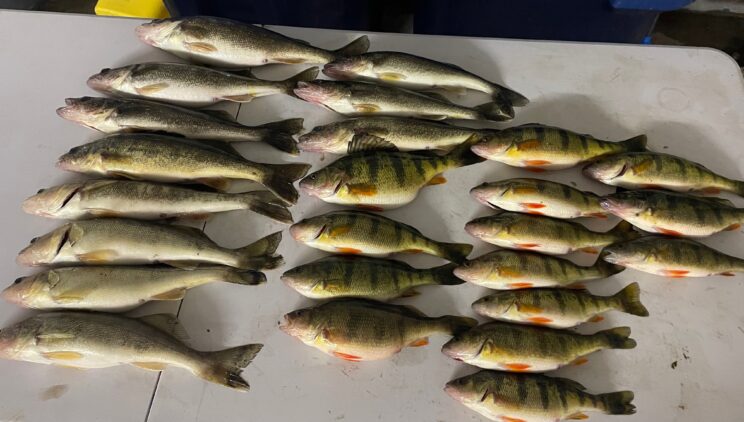
A short rod with the finesse of a light broomstick, attached to a cast iron Phleuger spinning reel, was used to lower a big steel spoon (with perch eye and hook attached) down to the bottom of the lake. You lifted the hammered or polished steel spoon sharp and high above your head. Then let it fall and flutter to the bottom of the lake.
Then hold it still and lift it slow.
If you saw a strike on the rod tip, or felt the weight of a fish, you set the hook. Hard. And shouted (I did) and cranked the fish up and out onto the ice…Get the perch off the hook quick and the spoon back down to the bottom — fast — before the roaming school of fish was gone!
It’s well known to anyone who knew my Dad that ice fishing was his favorite activity. As a kid, a teenager, and as an adult, I spent hundreds of hours ice fishing with him. He loved it.
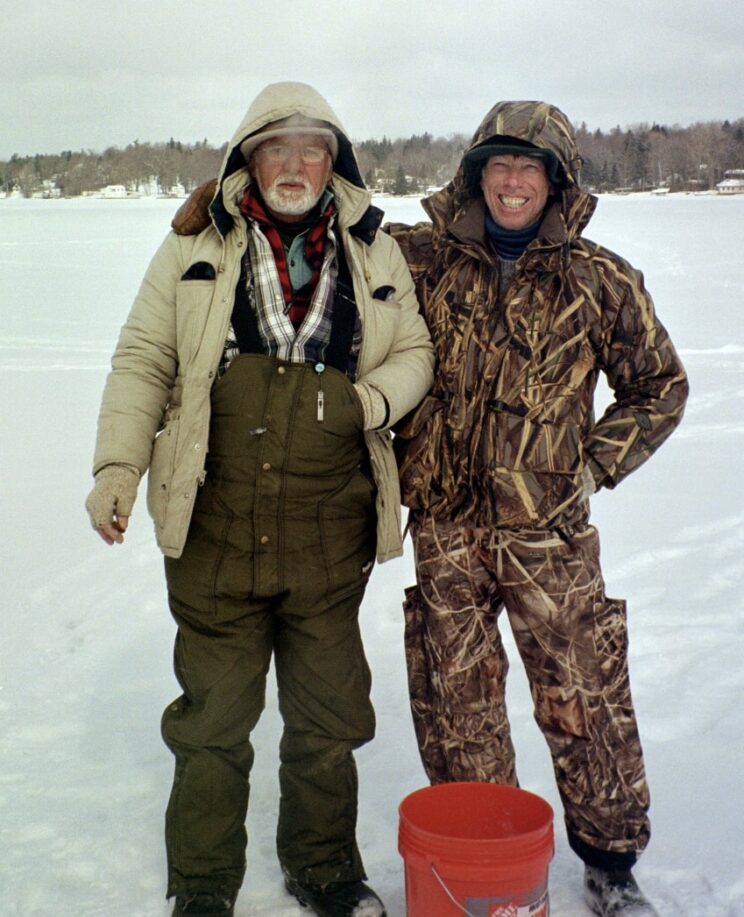
It was a social activity. On almost every Saturday in February my Dad and I could be found somewhere on the surface of Oneida Lake jigging for perch and walleye.
When the fishing was good in a certain location word would soon spread. Ice anglers (most of us knew each other back then) would show up on foot, on snowmobiles, four wheelers, and occasionally in cars and trucks. Enjoying the fishing, the fun, and each other.
Most of the guys were tradesmen or factory workers — Hard working guys that found fun and recreation each winter weekend on the frozen surface of the giant lake in search of The Mother Load of jumbo perch.
The fishing was not always good. Plenty of Winter Saturday afternoons in my teenage years I wished I was somewhere else. Somewhere other than the frozen surface of Oneida Lake…Following my Dad around. Skimming ice from holes.
A chance to do it again I would not miss. Funny how things change with time.
I learned a lot on those early ice fishing trips on Oneida Lake.
- How to drive sleds and quads on frozen lakes.
- How to tell when the ice was safe or not.
- Where to go to find fish.
- Where not to go.
- How to read a compass.
- How men talk when there are no women around for miles.
The level of ice fishing I did — as a kid — expanded my comfort level in the outdoors. It taught me how to lead anglers in difficult and often brutal environments found on the surface of a 55,000 acre sheet of ice. When fingers stop working, toes go numb. and machines won’t run.
Back then we fished for food and had fun doing it. Then someone somewhere (Wisconsin maybe?) started calling ice fishing a “sport”.
Portable sonars, fancy rods, and new-fangled ice jigs made their appearance on the ice of Oneida Lake in the early 80’s.
Stay tuned and I will write about that next time around.
Peace
Mike

